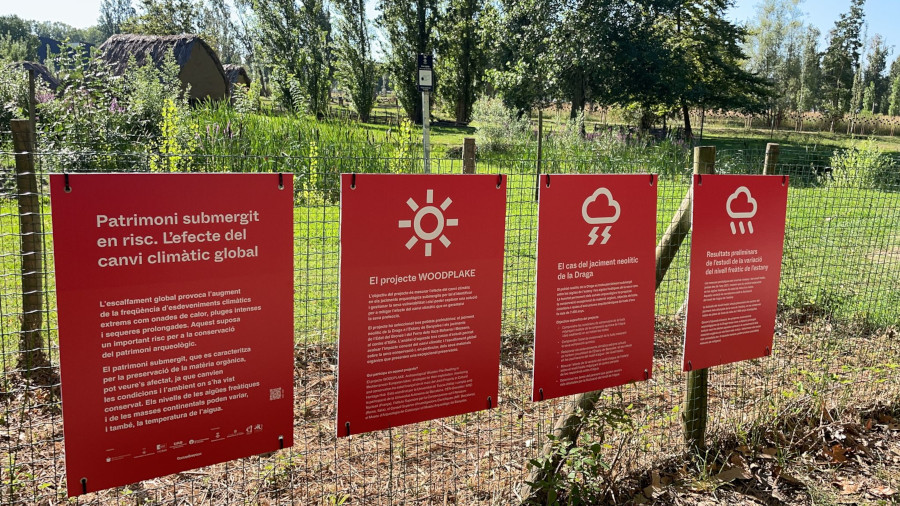The La Draga Neolithic Park houses the "Underwater Heritage at Risk" exhibition
This week, an exhibition entitled "Underwater Heritage at Risk. The Effect of Global Climate Change" will be on display at the La Draga Neolithic Park. Based on a European project which includes the involvement of the UAB, the exhibition will be on display until 24 September in the outdoor area next to the lakeside settlement, in Banyoles, and evaluates the impact of climate change on lakeside settlements of the Mediterranean region, as is the case of La Draga.

Global warming causes an increase in the frequency of extreme weather events such as heat waves, heavy rains and prolonged droughts. This poses a significant risk to the conservation of archaeological heritage, particularly submerged heritage, which is characterised by the preservation of organic matter and may be affected by changing conditions and the environment in which it has been preserved.
The exhibition on display at La Draga is part of the European project WOODPLAKE (Archaeological Wooden Pile-Dwelling in Mediterranean European Lakes: strategies for their exploitation, monitoring and conservation) in which the UAB participates and which aims to measure the effect of climate change on underwater archaeological sites in order to identify and manage their vulnerability and to explore a solution to mitigate the effect of climate change that guarantees their protection. In the framework of the project, three prehistoric settlements have been selected: the Neolithic site of La Draga and the Bronze and Iron Age sites of the Bolsena and Mezzano lakes in central Italy. The analysis of these three case studies makes it possible to assess the concrete impact of climate change and global warming on their conservation and, in particular, on the preservation of their organic materials, which are exceptionally well preserved.
The exhibition explains the impact of climate change on the conservation of sites, the WOODPLAKE project itself, the specific objectives of the research project in the case of the Neolithic site of La Draga and also the first preliminary results of the study of the variation in the water table of the lake.
With the aim of raising awareness of the problem among the general public, the exhibition has been installed outside the Neolithic Park so that those strolling around the lake can see the panels and discover the content of the project and how climate change may affect the La Draga site. The panels are in Catalan, and through a QR code that links to the website of the Museums of Banyoles (museusdebanyoles.cat) the content can also be found in Spanish and English.
The project, which has been funded within the framework of the Joint Projects in Cultural Heritage Hub, is coordinated by the University of Tuscia (Italy) with the involvement of the Universitat Autònoma de Barcelona (UAB), the Banyoles Town Council, CEA-Grenoble / ARCNucleart (France), the Istituto Superiore per la Conservazione ed il Restauro de Roma (Italy), the Consejo Superior de Investigaciones Científicas (IMF, Barcelona), the Museu Arqueològic de Banyoles and the Museu d’Arqueologia de Catalunya. The exhibition is also supported by the Girona Provincial Council and the Ministry for Culture of the Government of Catalonia.
A unique lake site in Spain
The archaeological site of La Draga, discovered in 1990 on the eastern shore of Lake Banyoles, is one of the oldest farming and livestock rearing settlements in the north-east of the Iberian Peninsula and one of the first Neolithic lakeside settlements in Europe (5,200-4,800 BCE). During its occupation, the settlement took the form of a peninsula that sloped gently and continuously into the lake. On the basis of surveys, it is assumed that it may have covered an area of approximately 8,000 square metres.
The site's location, in permanent contact with the water table, has led to the exceptional preservation of organic materials, from the wooden pillars of the huts to tools (hoe handles, sickles, digging sticks, etc.), remains of basketwork and even ropes. All this makes La Draga one of the most important sites for studying the European Neolithic period.